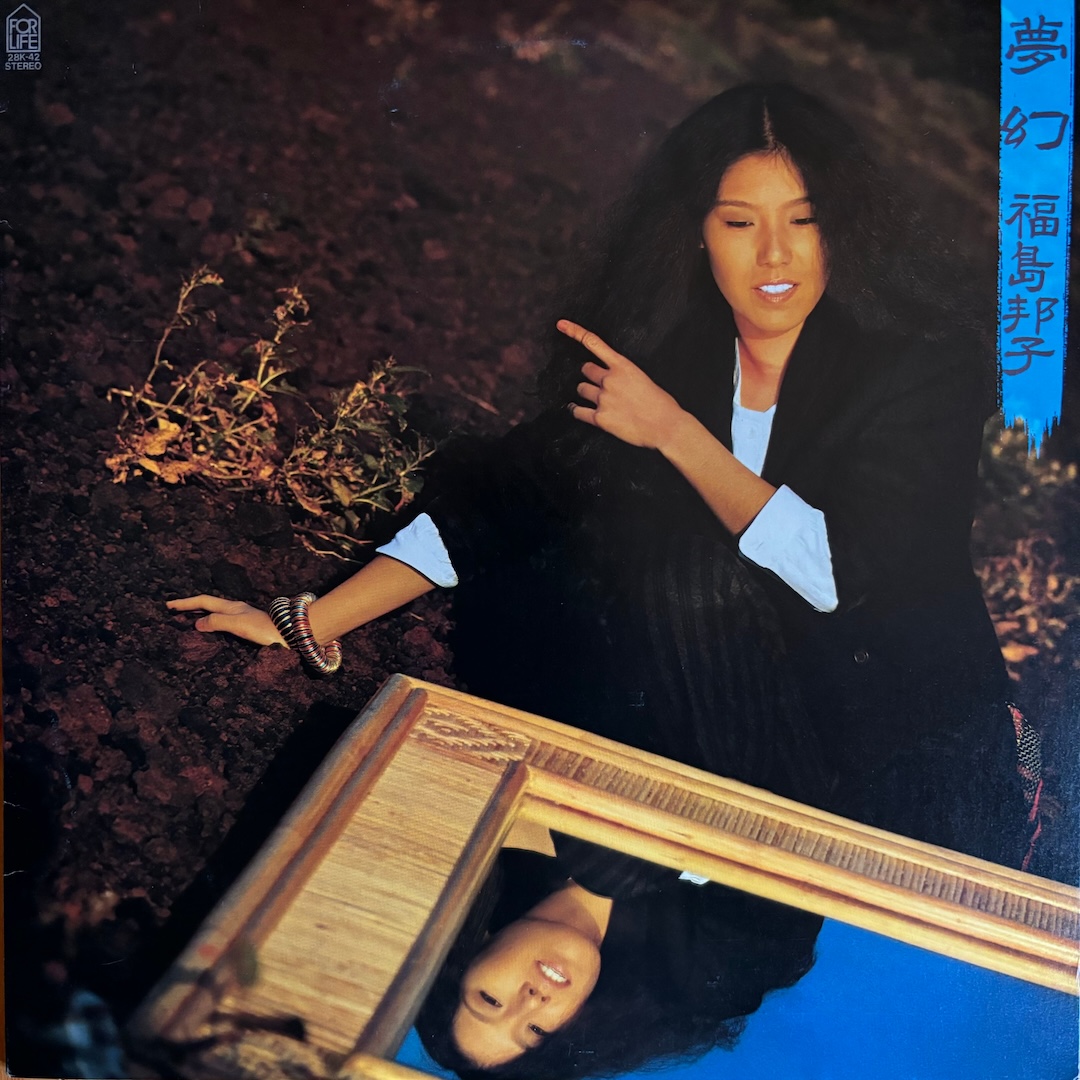With fall fully in season, I think now is a great time to turn over a few leaves I’ve neglected. Lately, my mind has been gravitating toward the music of Japanese singer Kuniko Fukushima and her 1983 leftfield turn, 夢幻 (Mugen).
Kuniko Fukushima began her musical journey with a strong foundation, born in Okayama but raised in a musical family in Shizuoka, in the land of Mt. Fuji. Kuniko’s mother, a member of the Shochiku Kagekidan, sparked her love for music, while her father and two brothers also played instruments. Kuniko discovered her passion for singing thanks to a piano teacher who also taught voice. It was the early influence of American singer Linda Ronstadt that inspired her to perform, choosing to do so with her electric guitar as she explored becoming a multi-instrumentalist.

Kuniko’s big break came in 1977 when she entered the 14th Yamaha Popular Song Contest with her brother, earning a Special Jury Prize for her song “Goodbye.” Competing alongside major rock artists like Masanori Sera, she caught the attention of For Life Records, a label founded by Takuro Yoshida and Yosui Inoue. This led to her debut under the label in 1978.
Gifted as both a singer and guitarist, Kuniko fought for her vision early on. She fronted the group “Kuniko Fukushima & Bay Bridge,” becoming one of the rare female leads in a Japanese rock band. Early records like 1979’s I’m Ready featured hits like “スロー・ダンサー” (Slow Dancer), which leaned into funky proto-City Pop/AOR vibes. Her second album To (1979) included jazzier tracks like “Bosa Nova,” which put her on the Oricon charts. By 1981, her songwriting was recognized when Naoko Ken covered her song, further cementing her reputation as a notable songwriter who would go on to write for artists like Anri and Akina Nakamori.
Yet, despite this growing fame, Kuniko admits that stardom was never her goal. She faced bouts of anxiety, eating disorders, and increasing pressure to fit into a mold that didn’t suit her.

What’s fascinating about 1983’s 夢幻 (Mugen) is how it marked a departure from what Kuniko was known for. Collaborating with artists like Moonriders, Tsugutoshi Goto, and synth maestro Hideki Matsutake, Kuniko updated her sound for a new era. Under the influence of electropop, reggae, and ‘80s art pop, Kuniko embraced the album’s title, which means “dream” or “illusion.” Songs like “夜を追いかけて” seem to ask whether her music is dreamy, fantastical, or simply an illusion—and the answer appears to be all of the above.
You wonder what her label thought of tracks like “涙のTOKYOハイウェイ” and “あいして京城.” These songs had more in common with the experimental “mutant funk” of Grace Jones and David Bowie’s post-Heroes work than anything traditionally Japanese. Kuniko was taking steps towards where music should be heading, and in doing so, she shed much of her AOR sound for freer, more inventive songcraft—reminiscent of Joni Mitchell’s own trajectory at the time.
Gorgeous, moody tracks like “宵待草” transform traditional enka ballads into atmospheric, quasi-ambient torch songs unlike anything else. “ひとりぼっちのラブソング” follows a similar path. What keeps drawing me back to 夢幻 (Mugen) are songs like “背中合わせ,” a stormy, Caribbean-influenced track that predicts a certain Balearic sound. In tracks like “恋,” you can even hear Kuniko wailing on sax, evoking the Thin White Duke himself.
夢幻 (Mugen) carries a wistful undercurrent. Songs like “ひとりぼっちのラブソング” evoke a sense of lost love, while themes of sadness, deception, and heartbreak surface in tracks like “ピエロ.” The album’s final track, “孤独の船,” is a hauntingly autumnal piece that showcases Kuniko’s ability to straddle past and future sounds, effortlessly—when given the freedom to do so.

After this album, she released ラ・ラ・ラ (La, La, La) in 1983, further breaking from her past. Recorded in America, where she would eventually settle, it marked her last work under For Life Records. By the mid-’80s, Kuniko decided to go independent, and after a decade in the music industry, she took a three-year break to battle stress and burnout.
Today, I’m happy to see that Kuniko has rediscovered her love for music, returning to live performances and embracing a simpler, more fulfilling approach to her craft. Now a vocal teacher in America, she is passing on her gift of singing to others. My hope is that, in time, Kuniko will receive the recognition she deserves for her earlier work. This blog post is my small way of contributing to that recognition.
